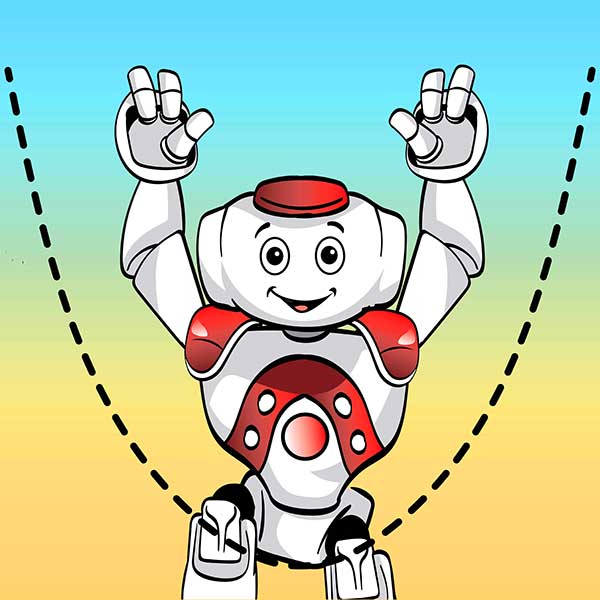Lesson Modules
Teaching Tips:
Before class print this worksheet for your students.
Place the robot in the middle of class or in front of the classroom so students can observe what the robot is doing.
Download this Choregraphe file to run the live demo of NAO.
Show live demo to the class and have students answer the question.
Share the results with the class and have a quick discussion about the properties of quadratics.
Download this file to run NAO. Observe NAO's dance and answer the following question.
Teaching Tips:
Group the students of 3 or 4 for this activity. Assign each group with a number from 1 up to 10. You cannot have more than 10 groups in a class.
First, have the students play with the interactive tool to review/learn how the coefficients 'a', 'h', and 'k' change the shape of the graph.
Then, have the students create a series of 6 poses for a quadratic dance on this worksheet. The students will be able to see the dance with simulation and edit the dance poses if they want.
Play with the interactive tool below. Move slides for a, b, and c coefficients and see how the graph is changing.
If you don't see the parabola, click on the grid-in.
Click on the empty box next to Vertx and see where the vertex is located and how the coordinate of the vertex is related to the equation (vertex form).
The dance consists of a series of 6 poses; each pose will have three specific attributes:
- Arm shape (U, reverse U or extended) – this maps to the curve shape influenced primarily by parameter ‘a’
- Waist height (low, normal, high) – this maps to the curve vertical location, influenced by the value of parameter ‘k’
- Waist location/tilt (tilted to left, neutral, titled to right) – this maps to the location of the curve’s apex and is influenced by the value of parameters ‘h’.
Created a series of 6 poses by specifying if each of 'a', 'h', and 'k' are negative, zero, or positive. Refer the table below to make your combination.
Print this worksheet to complete the dance design activity.
Do the dance yourself to see if you like the dance. Make some changes if you want to adjust the dance. If you like your dance, you are ready to make NAO dance!
Teaching Tips:
The students work in a small group (up to 10 groups in the class) to create a quadratic dance. Have the students watch the video and use the timeline blocks for each quadratic motion.
Encourage the students to be creative. For advanced students, they can add their favorite music to the dance.
Have students show their dance and vote for the best quadratic dance.
Make sure they follow the robot master roles. They must disconnect before handing out the robot master to the next group.
It's time to program NAO!
Use the table you created in the previous module for quadratic dance.
First, you can record NAO's motion to make the dance. Watch this video to learn how to animate NAO robot.
Be creative and feel free to add your favorite music to the dance.
Showtime!
Wait until your teacher allows your team to connect NAO with your computer. You can connect to NAO robot only when you have the robot master.
Show your dance to the class and vote for the best quadratic dance!
- Group1
- Group 2
- Group 3
- Group 4
- Group 5
- Group 6
- Group 7
- Group 8
- Group 9
- Group 10
Teaching Tips:
Have students check their understanding of each concept and write the reflective response.
You can share the results with the class and have a quick discussion about how the students understand each concept as a class. The results can be shared on the Class View.
For this lesson, you've applied quadratics to choreograph a series of poses. The followings are the detail concepts/skills that you've learned. Be totally honest. Your responses will not be graded. Have a quiet time to answer the questions individually.
- Not at all
- Not really
- Kind of understood
- Pretty much understood
- Totally got it
- Not at all
- Not really
- Kind of understood
- Pretty much understood
- Totally got it
- Not at all
- Not really
- Kind of understood
- Pretty much understood
- Totally got it
- Not at all
- Not really
- Kind of understoo
- Pretty much understood
- Totally got it

